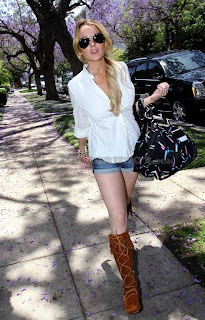Throughout the 20th century, the fashion and film industries have overlapped in many aspects, and each has impacted the other. Fashion and film are both social influences and thus affect public opinions, attitudes, tastes and styles. While prominent fashion designers often create the costume wardrobes for films, many designers also find inspiration from films for their latest collections. The following are 10 examples of famous films that have influenced fashion and fashion designers in the 20th century. 1) Casablanca (1942) starring Ingrid Bergman and Humphrey Bogart. Two-piece suits for women, trench coats for men, and fedoras complete this 1940's look.





2) James Bond Movies. No matter your favorite Bond actor, James Bond has been considered the "quintessential gentleman" and idolized by men throughout the 20th century. James Bond made the tuxedo truly glamorous and sexy.

3) Breakfast at Tiffany's (1961) starring Audrey Hepburn. This movie made Hepburn a fashion icon with her little black dress (now known as the LBD), oversized sunglasses, giant pearl necklace, and gloves.
4) The Great Gatsby (1974) starring Robert Redford and Mia Farrow. This is the film that put Ralph Lauren on the map, making him one of the world's most influential fashion designers as an American luxury lifestyle guru. It also brought about a jazz age fashion trend and the ever popular three piece suit for men.


5) Annie Hall (1977) starring Diane Keaton and Woody Allen. Keaton's style in this film made "androgynous chic" all the rage, and women started wearing men's ties, waistcoats, and wide-leg pants. This trend is still popular today though it has taken on different forms.
6) Saturday Night Fever (1977) starring John Travolta. Not only did Saturday Night Fever inspire America's dance craze making "The Hustle" America's number one dance, but disco wear including polyester leisure suits, bell-bottom pants and clinging shirts with butterfly collars became the fashion trend for America's nightlife.
7) American Gigolo (1980) starring Richard Gere. The impeccable tailoring and sophistication of Richard Gere’s suits caught the attention of the American public and Hollywood celebrities, helping to make Giorgio Armani an international phenomenon. The “power suit” became a preferred choice for professional men and especially women, as Armani brought casual chic and understated elegance to mainstream fashion.



8) Flash Dance (1983). This movie influenced the popularity of dance wear fashion as ripped sweatshirts and tops that exposed one shoulder coupled with leggings and leg warmers became a predominant 1980's fashion trend. Today's fashion has taken on a 1980's feel, as looser, one shoulder tops coupled with short, tight fitting skirts or tight fitting pants is a trendy look for women once again.
9) Dirty Dancing (1987). This film not only influenced America's dance moves, but also influenced American fashion as denim shorts and "crop tops" became a popular trend.

10) Pretty Woman (1990). Julia Roberts is transformed from street walker to elegant, society woman who finds true romance through her fashionable clothes. This modern fairy tale brought soft, romantic styles back into fashion for women, and made over the knee boots a modern fashion trend.

































_14.jpg)
































